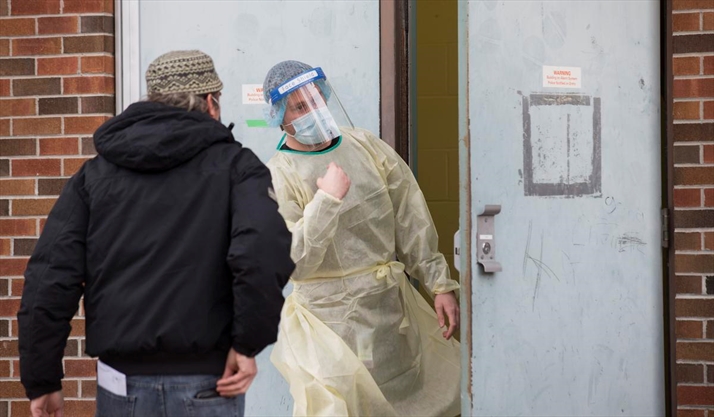Nursing-home residents in Ontario are at risk of missing out on the first because of “stability” concerns in transporting the Pfizer vaccine once it arrives, provincial officials say.
The caution came as Premier revealed who is first in line for injections and Ontario set its third record high for new cases in as many days with 1,925 more people testing positive for the virus.
As expected, the first phase of shots will go to residents, staff and essential caregivers at nursing homes, retirement homes and other congregate settings, health-care workers such as hospital employees, Indigenous communities and adults receiving home health care for chronic conditions.

The second phase for the rest of the population is not expected to begin until April, with priorities for who will get injections to be set later, and will take six to nine months.
“People are going to have to be patient that their turn will come,” Rick Hillier, the retired general heading Ontario’s vaccine task force, said Monday.
“We’re still very far, very far, from having the millions of vaccinations we need.”
With it likely that small amounts of vaccine will arrive in the initial stages of distribution — perhaps next week — the first shots will be aimed at “hot zones” with the highest infection rates like the GTA, said Rick Hillier.
He expects about 85,000 doses, enough for 42,500 people because of the two-stage injection protocol, in the first shipment.
The plan is to do injections at central sites, requiring people to travel to them.
Aside from requiring ultracold storage, Pfizer has advised the province it’s important to minimize jostling of its vaccine to maintain its effectiveness.
“Too much movement around can…cause a deterioration,” said Dr. David Williams, Ontario’s chief medical officer.
That’s why nursing-home residents may have to wait a few weeks for the next and more stable vaccine from Moderna. It all depends on final guidance from Pfizer, said Ontario Health Minister Christine Elliott.
“Obviously, many of the residents in those long-term-care homes or many of the retirement homes, in fact, could not come out and go to a vaccination site,” Hillier said.
But he told reporters that vaccinating staff and essential caregivers going to those facilities will “dramatically” decrease the risk to residents waiting for shots.
“We know the disease comes in from the outside,” said Donna Duncan of the Ontario Long-Term Care Association, estimating 624,000 doses will be needed for nursing home staff, residents and caregivers.
The virus has killed at least 2,305 nursing home residents and eight staff, including 12 residents who died in the last day, accounting for 61 per cent of Ontario’s fatalities from the pandemic. There are outbreaks in 113 nursing homes.
Ontario’s all-time high of 1,925 new daily marked the start of the third week in lockdown for Toronto and Peel.
Associate medical officer Dr. Barbara Yaffe said more time is needed to assess the “full impact” of the restrictions and noted computer modelling several weeks ago forecast Ontario could hit 6,000 cases daily if no measures had been imposed.
“It would have been a lot worse,” she added.
Deputy NDP Leader Sara Singh said the repeated records in new cases show the government has been making “empty claims” the pandemic is under control.
The new infections reported Monday boost the seven-day moving average of infections to an all-time high of 1,820.
That’s up 16 per cent in the last seven days, an increase from 10 per cent the previous week.
A total of 5,703 Ontarians have tested positive for COVID-19 since Friday and there have been 61 deaths, including 26 in the latest Ministry of Health report.
Hospitalizations are up 17 per cent in the last week to 725 people, with the latest critical-care report showing 223 people in intensive care, an increase of 22 in one day.
That means the province will soon top the record of 283 COVID-19 patients in ICU at the peak of the first wave last spring, said Anthony Dale, president of the Ontario Hospital Association.
“It’s really just a matter of time before we reach and move beyond that threshold,” he added. “Ontario is facing a brutal winter. We’ve got to turn this around.”
Health officials have warned non-emergency surgeries begin to get cancelled once ICUs hit 150 COVID-19 patients and become virtually impossible at 350.
Rob Ferguson is a Toronto-based reporter covering Ontario politics for the Star. Follow him on Twitter:
